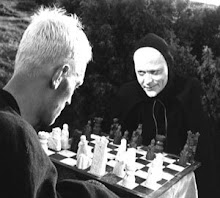"""""""From 1849 until 1858 Wagner spent almost ten of his most creative years in Zürich, Switzerland, as a German political refugee. It was there in 1854 that he encountered Buddhism, via the work of German philosopher Arthur Schopenhauer. Schopenhauer was the first mainstream European philosopher to take Hindu and Buddhist ideas seriously. His The World as Will and Idea had initially appeared nearly four decades earlier, in 1818, but had been all but ignored. According to Schopenhauer’s Buddhist inspired ideas, behind the world of phenomena is one vast, timeless will. All else, the world of perception and plurality, of space and time, objects and actions, is an illusion, the result of a process of individuation. Schopenhauer even used the Buddhist term, “Maya” to describe this illusion. What is real is will, not phenomenal representations or Maya. Most people live their lives within the veiled illusion of what is temporal and never discover reality. A blind attachment to temporal phenomena keeps the subject locked within the veil of illusion. To break free from this is possible, according to Schopenhauer, by means of detaching oneself from desire through the act of renunciation""""".......Holy Golden Stupa of Becomingness, Batman
Tuesday, March 02, 2010
Tristan, Isolde, and Gautama
Wagner and buddhism:
Subscribe to:
Post Comments (Atom)

Custom Search
Blog Archive
-
▼
2010
(266)
-
▼
March
(23)
- El Lobby de Google
- Hitchens watch
- Myths of the Old Testament
- The Meg and Mitt show
- Acsencion
- The Thrill of Trickery-- the Agony of Retreat
- Health-care homies
- Your annual Wm James update
- Gov. Megzanegger
- The Dean
- Jane-Day
- Sir Tom Clark
- UNDERWOOD POGONOMETRIC INDEX
- Los ZopilotesBlack vultures are rare in most of C...
- Gibbon-o-Matic
- Belief, Polkinghorne-style
- Temporarily Continued
- Tillykke med fødselsdagen! Bent Larsen, 75
- More on UC, Inc.
- El Cuatro de Marzo
- Byron's grave
- Tristan, Isolde, and Gautama
- Imperialism, Fog-city style
-
▼
March
(23)

No comments:
Post a Comment